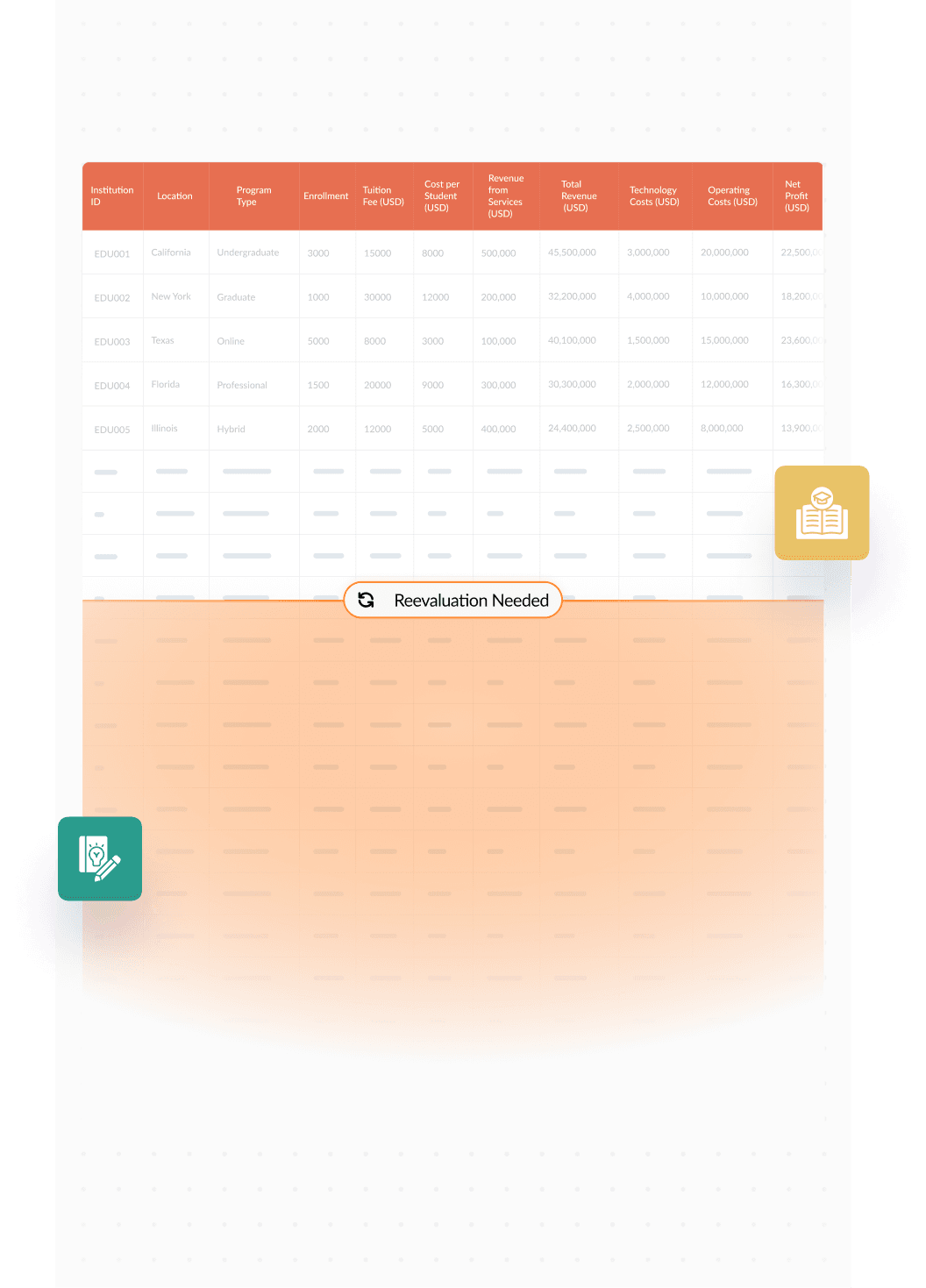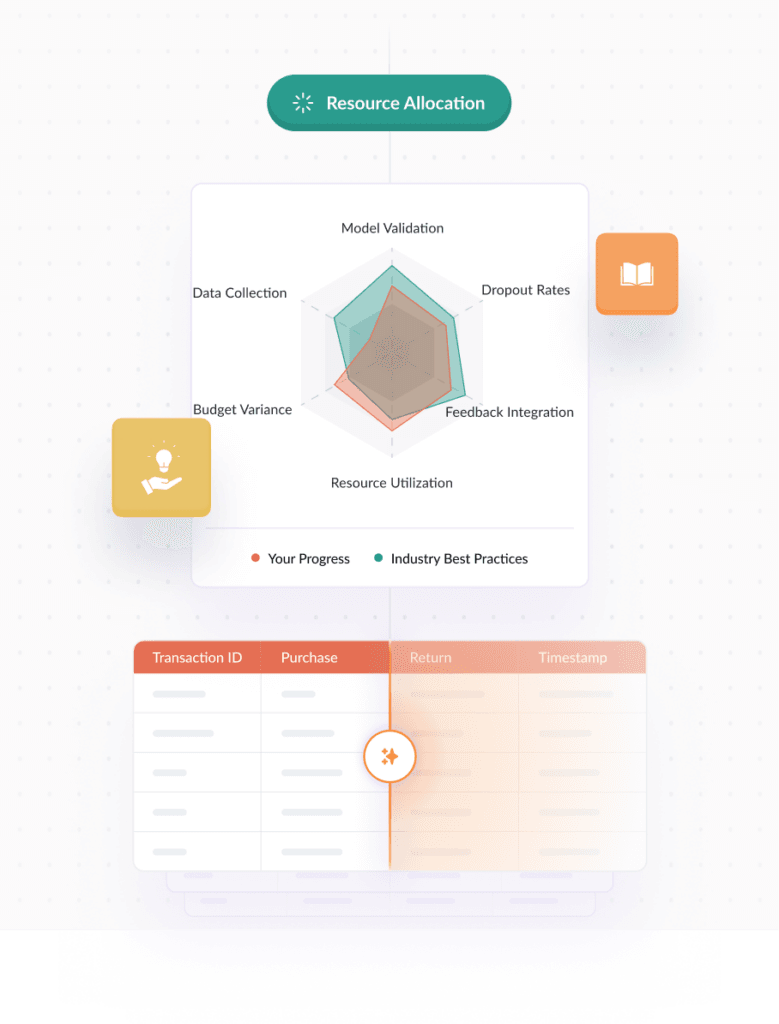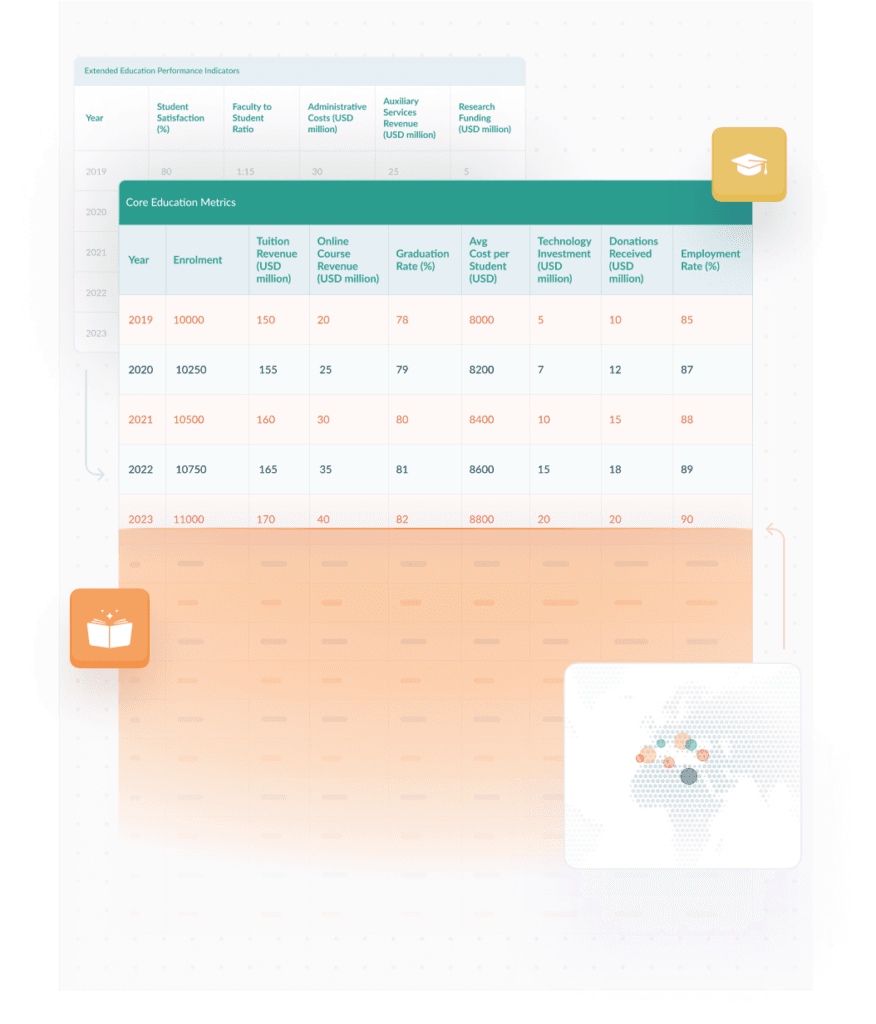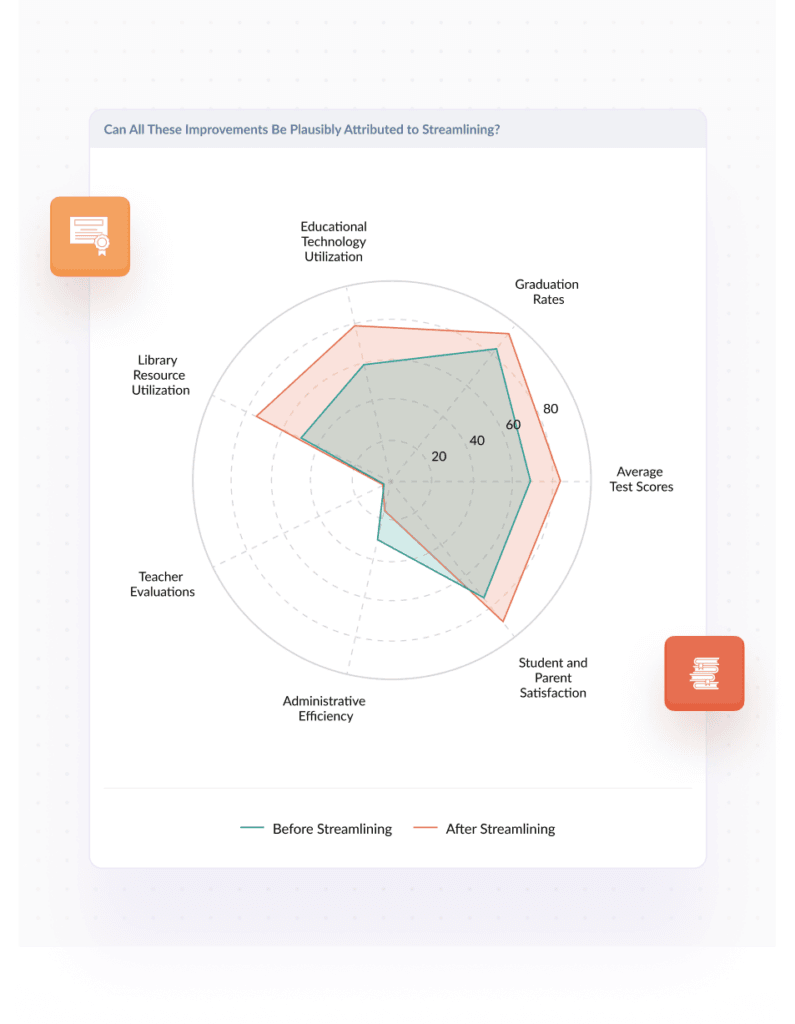Education
Schools, Universities, and Educational Services

Financial & Capital Analytics
Institutional Revenue Streams: Analyze tuition fees, grants, donations, and auxiliary services such as campus housing and dining. Assess their impact on overall financial health and stability of educational institutions
Cost per Student Analysis: Evaluate the cost-effectiveness of educational programs by calculating the cost per student. Consider factors like faculty salaries, facility costs, and technology investments
Online Education Financial Metrics: Scrutinize the financial performance of online education platforms, focusing on student acquisition costs, course completion rates, and revenue generated per online course
Program Portfolio Management: Optimize educational offerings by analyzing the profitability and popularity of courses and degrees. Identify underperforming programs for reevaluation or discontinuation
Technology Investment Returns: Balance investments in educational technology with actual utilization and educational outcomes. Assess the RoI of digital tools and platforms used in both classroom and remote learning environments
Enrollment Trends and Predictions: Investigate trends in student enrollment, including demographic shifts and preferences for fields of study. Use this data to forecast demand for courses and allocate resources effectively
Educational Needs Assessment: Conduct research into the evolving needs of the job market and align educational programs accordingly. Analyze employer feedback and job placement data to adjust curriculum and teaching methods
Funding Gap Analysis: Develop financial models that project future funding needs based on current and anticipated enrollment patterns. Model scenarios for fundraising, tuition adjustments, and cost-cutting measures
Economic Impact Studies: Create models to assess the economic impact of educational institutions on local communities. Consider factors like job creation, student spending, and the institution’s role in attracting businesses and residents
Strategic Funding Solutions: Identify optimal funding structures to support capital projects such as campus expansions or new research facilities. Explore a mix of debt, equity, and philanthropic contributions
Financial Sustainability Planning: Develop long-term financial plans that ensure the sustainability of educational institutions through cycles of economic change and varying enrollment levels
Budget Variance Tracking: Monitor and manage variances between budgeted and actual expenditures in educational settings. Pinpoint areas of overspending or underspending and adjust budgets to better reflect operational realities
Revenue Forecast Accuracy: Analyze discrepancies between forecasted and actual revenues from tuition, donations, and other sources. Investigate causes and adjust forecasting models to improve accuracy
Enrollment Volatility Analysis: Assess risks associated with fluctuations in student enrollment. Develop strategies to mitigate the financial impact of lower-than-expected enrollment numbers
Technological Disruption Risks: Evaluate the financial implications of rapid changes in educational technology. Plan for potential disruptions to traditional teaching methods and revenue models
Institutional Mergers: Analyze potential M&A opportunities between educational institutions. Evaluate financial and academic synergies, considering factors such as geographical overlap and program complementarity
EdTech Acquisitions: Assess the strategic fit and financial benefits of acquiring educational technology companies. Consider how such acquisitions could enhance the institution’s teaching capabilities and revenue generation
Process Mining
Extract data from learning management systems, student records, and administrative logs
Organize this data, removing redundancies and ensuring chronological accuracy to accurately reflect educational processes
Develop a visual model of student progression, curriculum effectiveness, and administrative efficiency
Measure the alignment of actual educational practices with academic standards and institutional goals
Refine educational strategies, improve curriculum delivery, and better manage resources based on analytics


Business Intelligence
Analyze student performance metrics, graduation rates, and course enrollment statistics to evaluate educational effectiveness
Examine factors contributing to low student performance or high dropout rates by assessing teaching methods, curriculum design, and student engagement activities
Forecast future enrollment trends or academic outcomes by using historical data on student demographics and past performance
Suggest curriculum adjustments or targeted support programs based on analytics to enhance student learning and retention
Synthesize data from educational assessments, socioeconomic factors, and learning technologies to infer best practices for teaching and curriculum development
Streamlining
Map educational processes from student enrollment through to graduation. Identify inefficiencies such as redundant administrative tasks or ineffective teaching methods
Use digital tools to automate administrative processes like enrollment, grading, and attendance tracking. Implement learning management systems (LMS) to facilitate course management and delivery
Utilize metrics such as student performance, graduation rates, teacher evaluations, and resource utilization rates to measure educational effectiveness and identify areas for improvement
Streamline operations by combining administrative services across departments or schools, such as shared services for IT support or centralized library resources
Establish consistent educational standards and teaching methodologies across courses and departments to ensure uniformity in learning outcomes and student experience
Implement regular feedback mechanisms for students, faculty, and parents to provide insights into the educational process and identify areas needing attention
Assess the effectiveness of streamlining efforts in improving educational delivery, resource allocation, and student satisfaction. Use these insights to fine-tune educational strategies

